
World's Largest Known Deep-sea Coral Reef Habitat Found
located on the Blake Plateau. Image courtesy of Sowers, et al.Data analyzed, which included imagery from 23 submersible dives in addition to mapping data, were collected as part of a coordinated, multi-year ocean exploration campaign involving NOAA Ocean Exploration, NOAA Ocean Exploration Cooperative Institute partners Ocean Exploration Trust and the University of New Hampshire , the Bureau of Ocean Energy Management, Temple University , and the U.S. Geological Survey, with contributions from Fugro , the NOAA Deep Sea Coral Research and Technology Program, and the South Atlantic Fishery
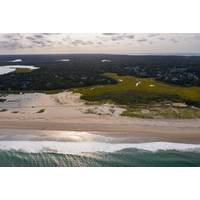
US Awards $6.7 Million for Sea Level Rise and Coastal Resilience Research
of California Santa Cruz received over $324,000 to evaluate flood risk in linked coral and mangrove ecosystems in the U.S. Virgin Islands.NCCOS is also funding projects through annual appropriations to improve coastal community response to sea level rise, including three projects led by the Cooperative Institute for Research to Operations in Hydrology (CIROH):(CIROH) University of Alabama received over $177,000 to develop nationally consistent coastal flood severity thresholds across the U.S.(CIROH) University of Alabama, University of Hawaii at Manoa and University of Hawai'i Sea Grant received
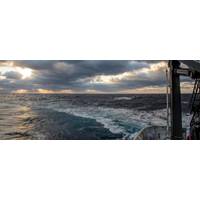
The Gulf of Mexico Is Getting Warmer
A new study quantifies the warming trend in the Gulf of Mexico’s ocean heat content over the past 50 years. The study, published in the American Meteorological Society’s Journal of Climate, was a joint effort between scientists at NCEI and the Northern Gulf Institute (NGI), a NOAA Cooperative Institute. The study shows that waters closest to the surface in the Gulf of Mexico have increased at a rate approximately twice that of the global ocean in the decades between 1970 and 2020.Due to its large size and the complex current system, the Gulf of Mexico is home to important marine species

Uncrewed Saildrone to Explore Remote Alaskan Waters
remote and understudied parts of the United States. NOAA Ocean Exploration and the Bureau of Ocean Energy Management (BOEM) are the primary sponsors of this work.The Aleutians Uncrewed Ocean Exploration expedition is a public-private partnership facilitated and led by the NOAA Ocean Exploration Cooperative Institute. The goal of the expedition is to collect ocean mapping and environmental data in unexplored waters around the Aleutian Islands identified as high priority for NOAA, BOEM, the U.S. Geological Survey, and the broader federal Interagency Working Group on Ocean Exploration and Characterization
New Under-ice Observing Capabilities Could Lead to New Discoveries in the Great Lakes
to be inspected without being drained, saving considerable time and money. Just as it navigates through these enclosed tunnels, this impressive underwater robot will soon be navigating its way under Great Lakes ice cover.NOAA GLERL’s partners on this project include Hibbard Inshore, the Cooperative Institute for Great Lakes Research (CIGLR), and the United States Geological Survey (USGS). (Photo: NOAA
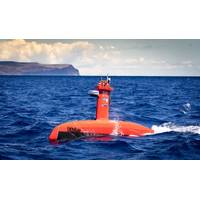
DriX USV Delivered to UNH CCOM
The University of New Hampshire’s Center for Coastal and Ocean Mapping (UNH CCOM), as a member of the Ocean Exploration Cooperative Institute (OECI), funded by NOAA Ocean Exploration, took delivery of an iXblue DriX Uncrewed Surface Vehicle (USV) and its Universal Deployment System. The autonomous solution will help expand the footprint and efficiency of the OECI’s ocean exploration operations. Delivered in July to UNH CCOM, DriX and its novel Universal Deployment System have completed sea acceptance trials and extensive personnel training during the summer of 2021 as well as integratio
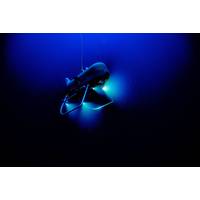
Subsea Vehicles: A Journey to the Under – and Outer – Worlds
vehicles have been built to date, named Orpheus and Eurydice, after the lovers of Greek myth legend. Both were taken on some of their first real salt-water dives on a mission off Florida from the Okeanos Explorer last year. The technology demonstration mission, funded by the Ocean Exploration Cooperative Institute (OECI), saw the vehicles undertake dives down to 866 m. Over 10 days, Orpheus did seven dives and Eurydice, the newer vehicle, one. Prior to this mission, Orpheus had only done three dives. It was Eurydice’s first saltwater outing. The surveys covered coral mounds on the Blake Plateau
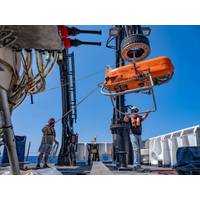
MTR 100: NOAA ... Working at the Interface of Exploration and Education
TechnologyOkeanos Explorer is also a platform for technology development and in May 2021 it hosted field engineering trials for Woods Hole Oceanographic Institution’s new Orpheus class of autonomous underwater vehicles (AUV), which was supported through the Ocean Exploration Cooperative Institute (OECI). Designed to withstand pressure down to 11,000 meters, it will provide access to some of the deepest parts of our ocean. Integration of a vision-based system for estimating relative position developed by NASA’s Jet Propulsion Laboratory, similar to the Terrain-Relative Navigation
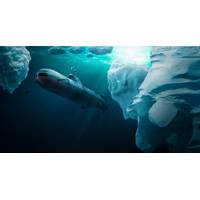
Seminar: NOAA Ocean Exploration Cooperative Institute - Exploring the US’s Blue Frontier
Please join us Aug. 11th at 3 p.m. EDT for a one-hour seminar on the Ocean Exploration Cooperative Institute (OECI), with Director Adam Soule and Manager Aurora Elmore. Opening remarks will be provided by NOAA acting Chief Scientist Craig McLean, Ocean Exploration Trust President Bob Ballard and NOAA Ocean Exploration acting Director Genene Fisher. This is the first in a six-part series and we invite you to attend and engage with presenters in live Q&A. Visit oeci.org/events/nsss to participate and see the full schedule.Background: The Ocean Exploration Cooperative Institute (OECI) is a NOAA-funded


 February 2025
February 2025





